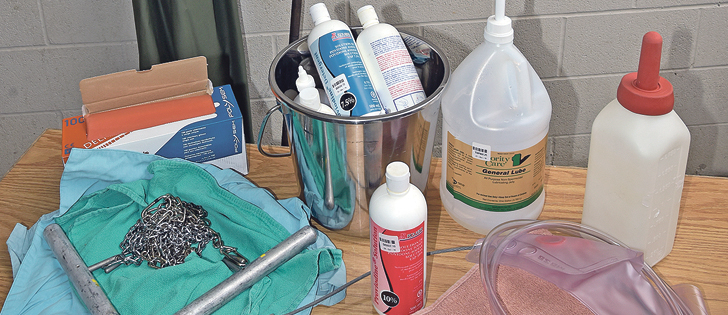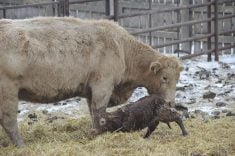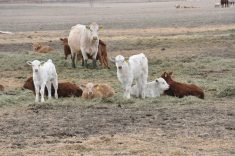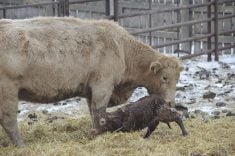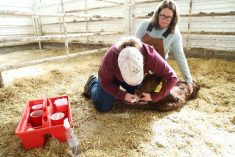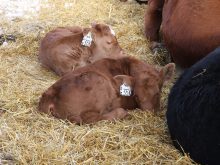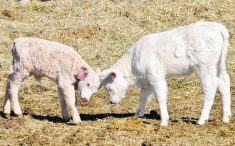The adage about having the right tool for the right job is good advice for calving season.
Given that monitoring calving can require long and tiring hours, having the tools at hand can save stress for people and animals.
Cody Creelman of Veterinary Agri-Health Services in Airdrie, Alta., says there isn’t much that surprises experienced ranchers.
“For the most part, my producers are very skilled. Typically if they can’t do a forced extraction on a calf through a vaginal birth, most of the time that ends up as a C-section or surgery to take that calf out. Most of the time, if they can’t get it out the back then there’s a pretty good chance that I’m not going to be able to get it out the back and would have to go to surgery,” he said.
Read Also

Farming Smarter receives financial boost from Alberta government for potato research
Farming Smarter near Lethbridge got a boost to its research equipment, thanks to the Alberta government’s increase in funding for research associations.
However, caesarians are rarely needed now because of improvements in genetic knowledge about calving ease.
“Now there’s so many cattle to choose from that you can start to tailor and select for indicators such as calving ease,” Creelman said.
But care and caution are still needed to ensure equipment works properly and that ranchers use the right procedures to protect their animals and themselves.
“There’s always potential for misuse so we put on calving clinics every year to train producers how to properly assess whether or not intervention is needed,” said Creelman.
Topics include identifying the best time to do a vaginal exam to assess the calf, as well as when to extract it and when to call the veterinarian.
Ceanna Tannas and her family were busy calving in early February at their ranch west of Water Valley, Alta., with 300 head of registered Black Angus.
She said it’s important to be organized ahead of time and recommended a review the calving supplies list so items can be restocked.
It’s also important to inspect each tool and make sure it is functioning properly and free of rust.
“Generally when calving starts out that’s when your problems are (during) those first couple weeks of calving. There’s always weird things at the beginning,” she said.
“Being prepared is essential for us because we live an hour from a major centre. These things are not hard to come by, but the stores are only open eight to five and cows don’t follow those rules.”
Some tools and supplies are used frequently and others not so much, but invariably someone will wish he could have had them all near at hand at one time or another.
“If you don’t need it, you try not to buy it for a while, but when you need it you need it,” said Tannas.
There have been relatively few innovations in calving tools because most are have been tried and tested.
However, she thinks calving chains should be improved be-cause they have potential to damage cow and calf if too much force is used.
Calving chains equipped with force meters are now being tested for commercial production at the University of Calgary’s College of Veterinary Medicine.
“They’re using the prototype for research purposes during dystocia. When you put the chains on, you can tell how much force is being applied,” she said.
Creeland said he has a couple of tricks that work for him.
“I have a set of cray hooks that allow me to help with those head back manipulations,” he said.
“Where the big difference comes down to is in terms of technique of manipulation.”
Calving equipment checklist:
- calving chains and handles
- calf puller
- head snare
- stomach tube, speculum
- I.V. funnel kit
- calf esophagal feeder bags
- elastrator rings and applicator
- thermometer
- halter and soft rope
- calf sled
- calving suit
- latex gloves and obstetrical sleeves
- calf bottle and nipple
- bucket for wash water
- sterile syringes and needles
- obstetrical lubricant and squeeze bottle
- rags or roll cotton for washing the cow
- suction bulb for suctioning fluid from the nostrils of a calf that’s not breathing
- iodine or chlorhexadine for disinfecting navel stumps
- flashlight with good batteries
- injectable antibiotics for cows/calves, prescribed by vet
- stomach tube (nasogastric tube)
- frozen colostrum or packages of commercial colostrum replacer
- electrolytes




